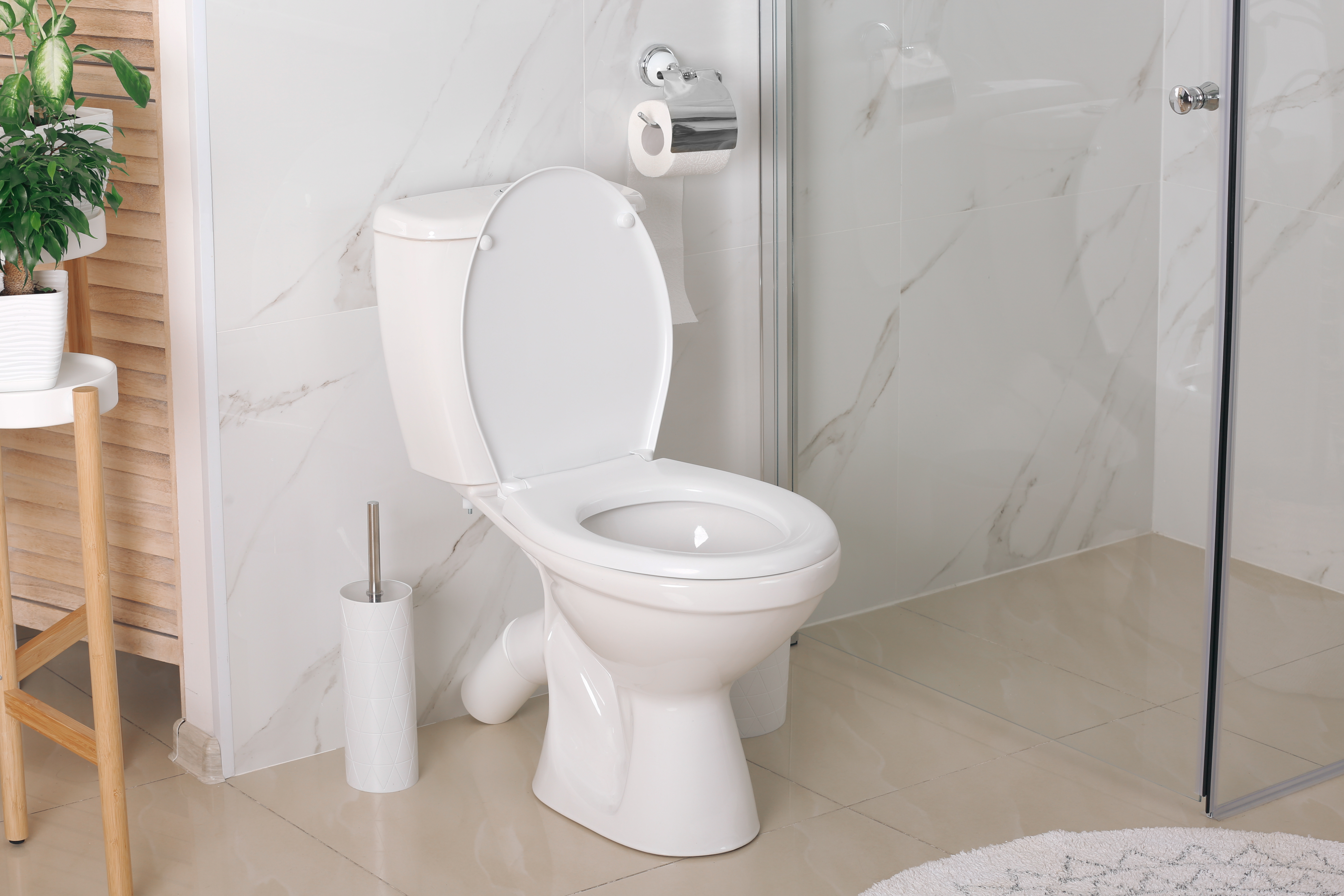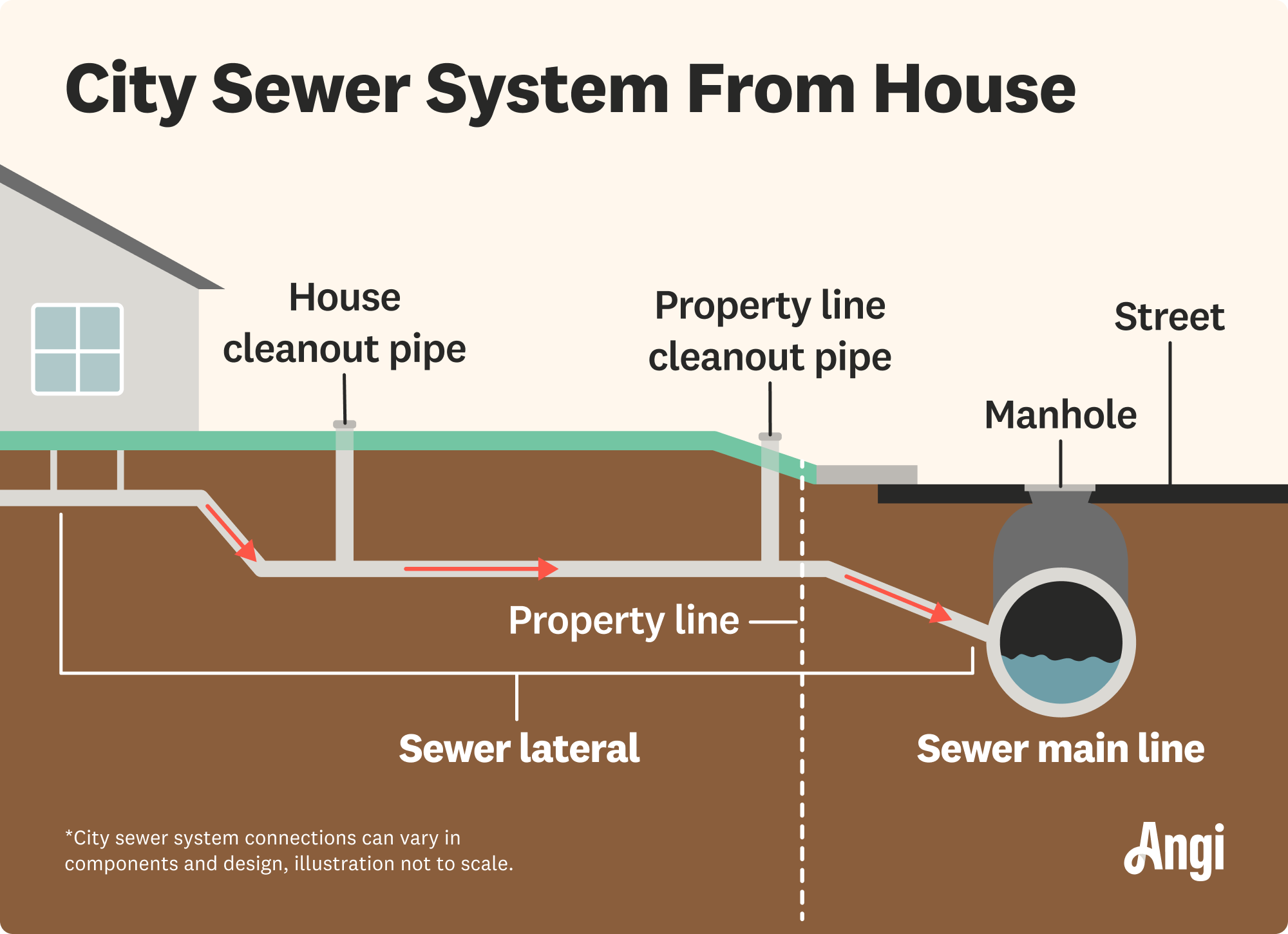
Need to know what sewer line replacement costs in Portland, OR? This guide will help you prepare to budget for sewer line replacement done by local contractors.
Most people pay $2,586 to install a sewer line in Columbus, Ohio, but depending on materials and labor costs in your area, you may end up paying between $1,317 and $3,982.


PVC and ABS piping are the go-to for new sewer lines in Columbus because of their durability and affordability.
Ohio’s freeze–thaw cycles can prematurely degrade cast-iron or clay piping, causing cracks and leaks.
Costs will increase if you run into boulders because the glacial till soil requires specialized equipment and additional labor.
Sewer contractors in Columbus must carry a license, and permitting costs vary based on the size of your sewer line.
The cost to install a sewer line in Columbus, Ohio, is $2,586 on average, with most homeowners spending between $1,317 and $3,982. The vast majority of homes in the area are connected to the public sewer system—but homeowners are responsible for the maintenance of the line on their property.
If you’re experiencing issues like sewage backups, gurgling pipes, or a lush patch of grass on your lawn, your sewer line may be a problem. Here’s how the replacement costs shake out.
A local sewer pro will understand the nuances of installing a sewer line in Columbus, Ohio. Trenchless line replacement is popular in the city's most populated areas, but you will need to dig out a new line if you’re installing a sewer line in new construction. This, along with a number of other factors, adds to the costs.

The average cost to install a sewer line ranges from $50 to $75 per linear foot, but costs for complicated installations or higher-end types of sewer pipes can hit $250 per linear foot. Sewer line pipes are about 5 inches in diameter and run underneath your yard from your house to the main sewer drain.
| Installation Size (Linear Feet) | Average Cost |
|---|---|
| 10 | $500–$750 |
| 20 | $1,000–$1,500 |
| 40 | $2,000–$3,000 |
| 60 | $3,000–$4,500 |
| 80 | $4,000–$6,000 |
| 100 | $5,000–$7,500 |
To install a sewer line, you’ll need to purchase the pipes that connect the main sewer drain to your home. New pipes cost about $3 to $20 per linear foot, but specialized sewer pipes may exceed that.
Older homes in Columbus may have cast-iron, clay, or Orangeburg pipes. Orangeburg pipes are no longer used, and clay can crack in freezing weather or looser till soil that’s prone to movement. Cast iron is similarly vulnerable to the freeze-thaw cycle and can prematurely corrode with Ohio’s rainfall and humidity. Most contractors will recommend upgrading to PVC or ABS pipes.
Factor in the type of piping material and the cost per linear foot by referencing the following chart:
| Type of Piping Material | Cost per Linear Foot (Material Only) | Pros | Cons |
|---|---|---|---|
| PVC | $3–$10 | Great for outdoor use, corrosion-resistant, and affordable | Less strong than metal piping, sensitive to temperature changes, and can become brittle in cold weather |
| ABS | $5–$11 | Great for outdoor use, durable in freezing weather, lightweight, and easy to install | UV sensitivity, BPA content can leech into water, and costlier than PVC |
| Cast iron | $20–$75 | Long-lasting, high durability, and nonflammable | Heavy, can crack in freezing temperatures, and is costly to repair and replace |
| Copper | $30–$100 | Long-lasting, durable, lightweight, and easier to install | Costly, prone to freezing, and can corrode with acidic water |
| Clay | $50–$60 | Resistant to chemical degradation, environmentally friendly, and durable | Heavy, prone to cracks, and vulnerable to tree roots, freezing weather, and soil instability |
Trenchless sewer line replacement costs less than traditional replacement because you won’t have to excavate in the same way. If you do have to excavate, you may need a soil test. Columbus largely has glacial till soil, which can be unpredictable in terms of composition and density. You may find areas with more boulders than expected.
Potential land prep costs include:
Trenching: $5–$12 per linear foot
Soil testing cost: $700–$2,100 (if not included)
Boulder removal cost: $650–$1,200 per boulder
Tree removal cost: $200–$2,000 per tree
Pavement removal cost: $8–$15 per square foot
Old pipe disposal: $250
Labor makes up a significant portion of sewer line installation costs. You may find installation prices from $30 to $250 per linear foot, or your contractor will charge an hourly rate. The latter is common with partial replacements. Here’s how the professional costs add up.
You’ll need a sewer permit before you can install a sewer line. This costs $85, plus a front footage charge of $45 per linear foot of the line.
Many sewer repair pros in Columbus, Ohio, charge an hourly rate of $65 to $95 for their labor. Contractors must hold a Sewer and Water contractor license, which is granted by the Department of Building and Zoning Services. They’ll also need to carry liability insurance and a $25,000 bond.
Sewer line installation does not increase home value—but a damaged or failing sewer line can decrease it. This is most common in older houses with cast-iron or clay pipes, which are vulnerable to the freeze-thaw cycles during Ohio’s winters. However, sewer line issues can still happen in newer pipes that are vulnerable to tree roots.
In Ohio, sellers are legally required to disclose known plumbing issues to potential buyers, and they may not want to shoulder the cost of a large repair. For this reason, if you notice issues, your best bet is to find a plumber to inspect your plumbing and make necessary repairs.
A few warning signs that something is wrong with your system include a constant gurgling, slow-flushing toilets, bad odors, flooding in the yard, and a washing machine that's not draining properly (your clothes are still soaking wet after the spin cycle). Reach out to a pro if you think something may be wrong.
Home is the most important place on earth, which is why Angi has helped more than 150 million homeowners transform their houses into homes they adore. To help homeowners with their next project, Angi provides readers with the most accurate cost data and upholds strict editorial standards. We survey real Angi customers about their project costs to develop the pricing data you see, so you can make the best decisions for you and your home. We pair this data with research from reputable sources, including the U.S. Bureau of Labor Statistics, academic journals, market studies, and interviews with industry experts—all to ensure our prices reflect real-world projects.
Want to help us improve our cost data? Send us a recent project quote to [email protected]. Quotes and personal information will not be shared publicly.
From average costs to expert advice, get all the answers you need to get your job done.

Need to know what sewer line replacement costs in Portland, OR? This guide will help you prepare to budget for sewer line replacement done by local contractors.

Get transparent sewer line camera inspection cost info. Learn what impacts pricing and how to budget for this essential home maintenance.

Need to prevent sewer backflow on your property? Explore the factors of backflow preventer installation cost, including device types and common add-ons.

A saturated leach field can lead to costly damage to your plumbing and yard. Learn how to fix a saturated leach field with this guide.

The size of a small septic system falls between 750 and 1,000 gallons. Keep reading to learn all about small septic systems for one toilet and how to choose one.

What is a septic tank distribution box, and how important is it? Learn about this critical component, its purpose, and how it functions in this guide.